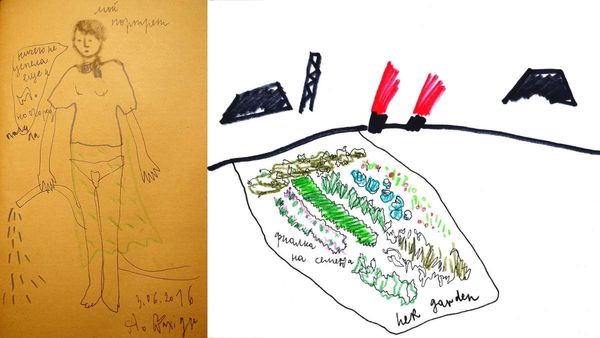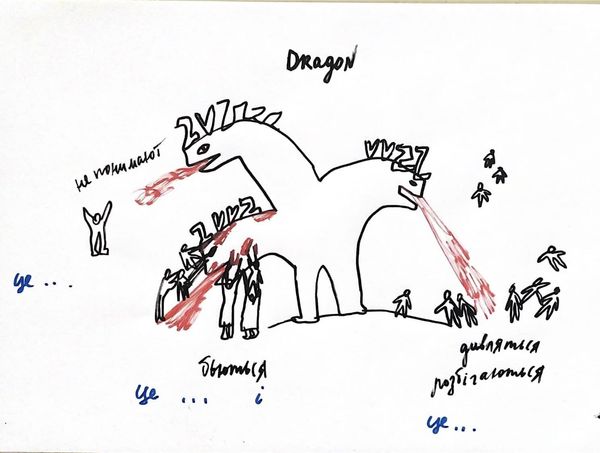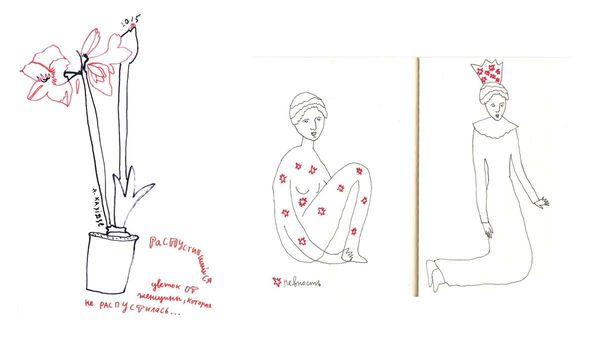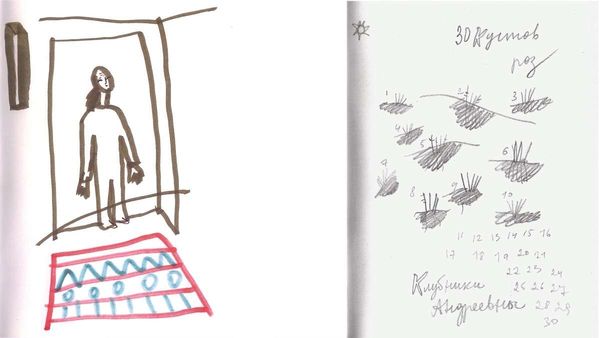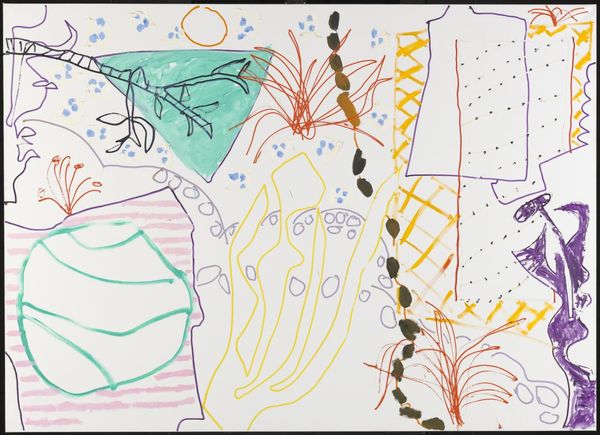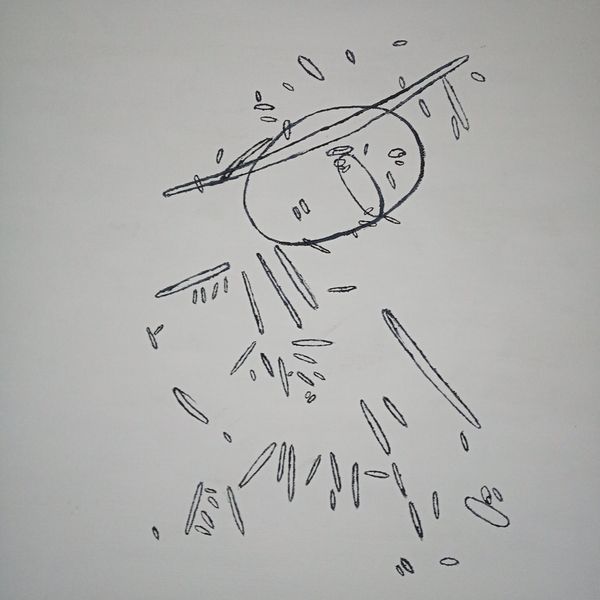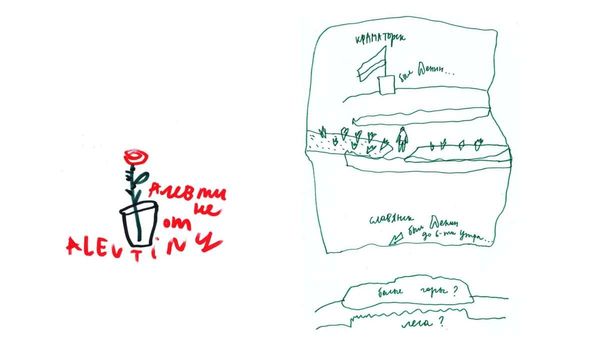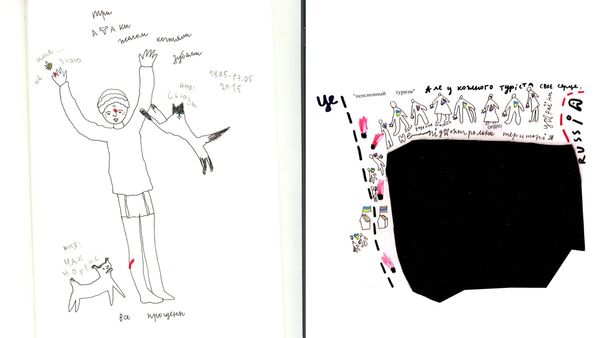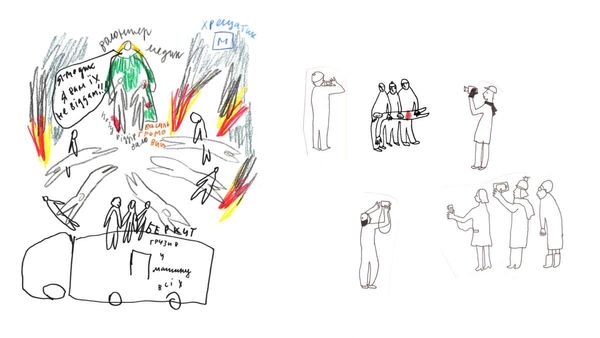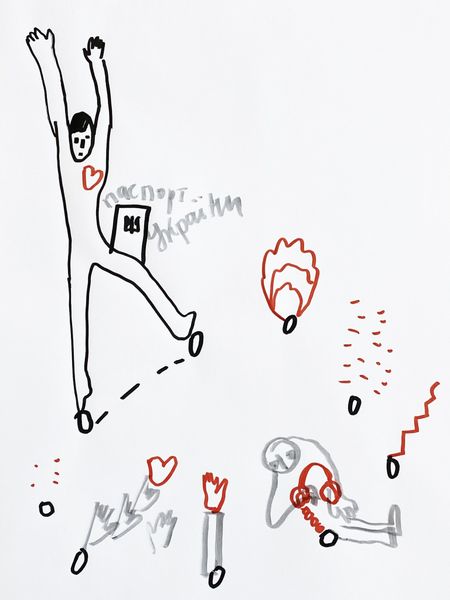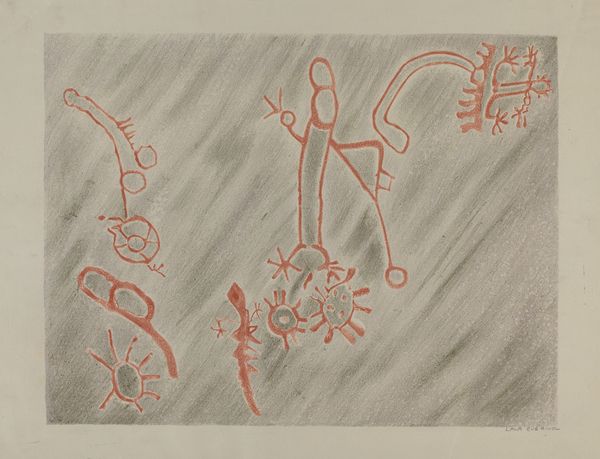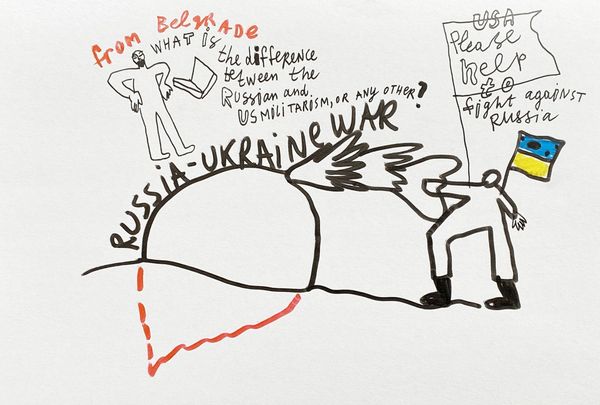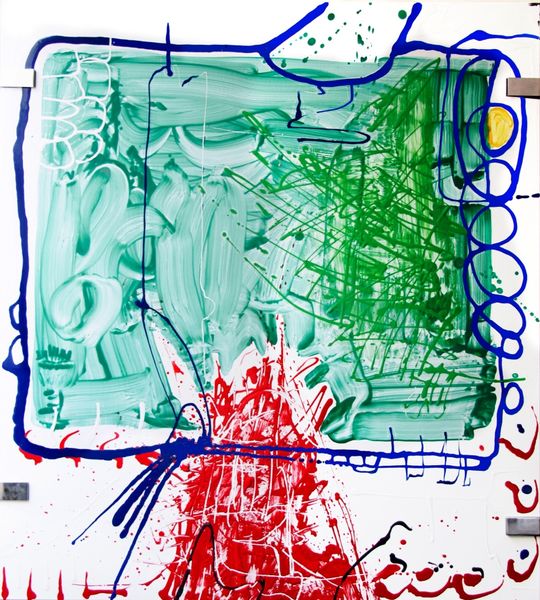
drawing, mixed-media, paper, ink
#
word art style
#
drawing
#
mixed-media
#
contemporary
#
hand-lettering
#
narrative-art
#
small typography
#
playful lettering
#
hand drawn type
#
hand lettering
#
paper
#
social-realism
#
ink
#
bright colours popping
#
eye-catchy type
#
folk-art
#
typography style
#
small lettering
Copyright: Alevtyna Kakhidze,Fair Use
Editor: So, here we have Alevtyna Kakhidze's "Untitled," created in 2018 using mixed media – ink and drawing on paper. I find the imagery quite whimsical and naive, with the chickens and text creating a childlike mood. How would you interpret this work, considering its context? Curator: Well, the childlike quality, the bright colors, and the directness of the message, "Decommunization in Ukraine," immediately suggest a commentary on political shifts, right? Consider how Kakhidze uses what seems like simple folk art to address complex societal issues. The artist is directly engaging with Ukraine's efforts to move past its Soviet past. What impact do you think presenting political discourse with seeming naivety might have? Editor: It definitely makes it more accessible, maybe even disarming. Like, it invites you in rather than pushing you away with heavy-handed rhetoric. Is it playing with the visual language of propaganda, perhaps? Curator: Exactly. Think about the role of art in social realism and folk art traditions – both often employed as tools of communication and, at times, persuasion. The artist may be subverting these familiar modes. Are the chickens meant to symbolize something about Ukrainian society? How might the imagery engage viewers on a deeper, possibly subconscious, level? Editor: That’s fascinating! So, beyond the surface level, the work becomes a dialogue about the role of imagery and communication in shaping national identity and confronting historical narratives. It is pretty striking! Curator: Precisely. Art's public role lies in its ability to provoke this kind of critical examination, using visual strategies to ask meaningful questions about our shared history and the politics that influence it. I will definitely look closer at folk art after this.
Comments
No comments
Be the first to comment and join the conversation on the ultimate creative platform.
